How to Brake Properly on a Motorcycle
Method 1 of 3:
Coming to a Controlled Stop
-
 Start braking at the proper time depending on your speed. Your average reaction time before you apply the brakes is around 0.62 seconds. When you use your brakes, it will take more time to come to a complete stop if you're going faster. If you're going 30 mph (48 km/h), it will take approximately 2.39 seconds to stop but the distance you travel equals about 66 ft (20 m). Always apply your brakes to maintain a safe distance between you and any vehicles in front of you.[1]
Start braking at the proper time depending on your speed. Your average reaction time before you apply the brakes is around 0.62 seconds. When you use your brakes, it will take more time to come to a complete stop if you're going faster. If you're going 30 mph (48 km/h), it will take approximately 2.39 seconds to stop but the distance you travel equals about 66 ft (20 m). Always apply your brakes to maintain a safe distance between you and any vehicles in front of you.[1]- Always stay aware of your surroundings and other traffic so you can brake when you need to.
- If your bike has an anti-lock braking system (ABS brakes), then your stopping time and distance may be slightly shorter.
- Your braking distance can also be affected by road conditions. Slippery roads, like those made from gravel or covered in rain, will increase the distance it takes to stop.
-
 Ease off the throttle. The throttle is located on the right handlebar and twists toward you to accelerate. Slowly turn the throttle toward the front of the bike when you want to decelerate or come to a stop. When you disengage the throttle, your bike will start to slow down naturally since you aren't giving the engine any gas.[2]
Ease off the throttle. The throttle is located on the right handlebar and twists toward you to accelerate. Slowly turn the throttle toward the front of the bike when you want to decelerate or come to a stop. When you disengage the throttle, your bike will start to slow down naturally since you aren't giving the engine any gas.[2]- If you keep your throttle twisted toward you while you brake, it will cause stress on your transmission and brake pads.
-
 Press down on the rear brake with your right foot. The rear brake lever is located in front of your right foot on your motorcycle. When you want to reduce your speed, use your toe to gently press the rear brake lever. Don't apply too much force or your rear tire will lock up and could cause you to lose control.[3]
Press down on the rear brake with your right foot. The rear brake lever is located in front of your right foot on your motorcycle. When you want to reduce your speed, use your toe to gently press the rear brake lever. Don't apply too much force or your rear tire will lock up and could cause you to lose control.[3]- Avoid only using your rear brakes since it can cause your bike to skid and increase your stopping distance.
-
 Squeeze the front brakes at the same time with 2 fingers to ease into the stop. The front brake control is the handle directly above the throttle on the right handlebar of your motorcycle. As you press down on the rear brake lever, use your index and middle finger to slowly squeeze the front brake controls.[4]
Squeeze the front brakes at the same time with 2 fingers to ease into the stop. The front brake control is the handle directly above the throttle on the right handlebar of your motorcycle. As you press down on the rear brake lever, use your index and middle finger to slowly squeeze the front brake controls.[4]- Your front brake controls about 75% of your stopping power and will be the most effective when braking.
- Avoid squeezing the front brake with all 4 fingers since you might lock the tire and cause you to lose control.
Tip: If your front tire locks up while you're braking, let go of the lever and reapply it firmly.[5]
-
 Hold the clutch to help slow down. The clutch is the lever on the left handlebar on your motorcycle. As you decelerate, squeeze on your clutch. This will help slow you down even more and allows you to shift into lower gears.[6]
Hold the clutch to help slow down. The clutch is the lever on the left handlebar on your motorcycle. As you decelerate, squeeze on your clutch. This will help slow you down even more and allows you to shift into lower gears.[6]- Even though holding the clutch in will help you slow down, it will not activate your brake lights. Make sure to always apply your brakes when slowing down so other drivers are aware.
-
 Shift into first gear before you get to your stop. As you slow down, use the shifter lever near your left foot to downshift to first gear. Putting your bike into its lowest gear helps you get a smooth start and stop while you're riding.[7]
Shift into first gear before you get to your stop. As you slow down, use the shifter lever near your left foot to downshift to first gear. Putting your bike into its lowest gear helps you get a smooth start and stop while you're riding.[7]- If you were already in first gear before slowing down, you don't need to make any changes.
-
 Plant your left foot when your bike stops moving. Once your bike comes to a complete stop, take your left foot and put it firmly on the ground. This will help you keep your balance and prevents the bike from falling over. When you want to start moving again, begin slightly accelerating before putting your foot back in its place.[8]
Plant your left foot when your bike stops moving. Once your bike comes to a complete stop, take your left foot and put it firmly on the ground. This will help you keep your balance and prevents the bike from falling over. When you want to start moving again, begin slightly accelerating before putting your foot back in its place.[8]
Method 2 of 3:
Slowing Down for a Turn
-
 Ease off of the throttle before you start your turn. As you approach your turn, slowly twist the throttle away from you to decelerate. Reduce your speed so you're still able to make your turn, but not so you come to a complete stop.[9]
Ease off of the throttle before you start your turn. As you approach your turn, slowly twist the throttle away from you to decelerate. Reduce your speed so you're still able to make your turn, but not so you come to a complete stop.[9]- If you're going too fast into your turn, you may cross into a different lane or into oncoming traffic.
- If you're going slow enough to make your turn and you don't need to use your brakes, slightly press on the rear brake to flash your brake lights. This lets other traffic know that you're going to slow down more.
-
 Apply the brakes before your turn if you need to slow down more. Easing off your throttle should be enough to slow you down during a turn, but you might need your brakes if it's a tight corner. Gently press your right foot on the rear brake control and squeeze the front brake control with your right hand. Make sure the bike doesn't come to a complete stop unless you need to make one.[10]
Apply the brakes before your turn if you need to slow down more. Easing off your throttle should be enough to slow you down during a turn, but you might need your brakes if it's a tight corner. Gently press your right foot on the rear brake control and squeeze the front brake control with your right hand. Make sure the bike doesn't come to a complete stop unless you need to make one.[10]- If you apply either of the brakes too hard, you may lose traction and lose control.
-
 Lean into your turn. Squeeze your knees against your bike's body to help maintain your balance. Look toward your turn and press the handlebars in that direction. As you make your turn, lean toward that side of the bike to keep your balance. Your bike will start to lean into the turn so you can maintain control.[11]
Lean into your turn. Squeeze your knees against your bike's body to help maintain your balance. Look toward your turn and press the handlebars in that direction. As you make your turn, lean toward that side of the bike to keep your balance. Your bike will start to lean into the turn so you can maintain control.[11]- During a regular turn, lean your body and the motorcycle at the same angle.
- During slow tight turns, keep your body as straight as you can and only lean the motorcycle to maintain your balance.
Warning: Avoid using your brakes in the middle of your turn or else you could skid.
-
 Accelerate as you come out of the turn to stay balanced. While you're in your turn, maintain the same speed by holding onto the throttle. At the end of the turn, twist the throttle toward your body to speed up and keep your bike stable.[12]
Accelerate as you come out of the turn to stay balanced. While you're in your turn, maintain the same speed by holding onto the throttle. At the end of the turn, twist the throttle toward your body to speed up and keep your bike stable.[12]
Method 3 of 3:
Braking in Different Road Conditions
-
 Use both brakes when coming to a stop no matter the conditions. When you're riding, it's best to always use both of your brakes when you need to slow down or stop. That way, you don't have to change anything during an emergency situation. Apply both brakes evenly to come to a controlled stop in the shortest distance.[13]
Use both brakes when coming to a stop no matter the conditions. When you're riding, it's best to always use both of your brakes when you need to slow down or stop. That way, you don't have to change anything during an emergency situation. Apply both brakes evenly to come to a controlled stop in the shortest distance.[13] -
 Brake sooner than you normally would on slippery surfaces. Roads made of gravel or pavement that is wet can cause your bike to lose traction while it's stopping. If you're on a road that isn't smooth, stay aware of your surroundings and other traffic on the road. Apply your brakes early to avoid any collisions.[14]
Brake sooner than you normally would on slippery surfaces. Roads made of gravel or pavement that is wet can cause your bike to lose traction while it's stopping. If you're on a road that isn't smooth, stay aware of your surroundings and other traffic on the road. Apply your brakes early to avoid any collisions.[14]- Ride in another vehicle's tire tracks if you can to avoid slipping.
Warning: Even things that you can normally ride over in a car, such as a manhole cover or lane marking, can cause your bike to lose control. Avoid going too fast over them when you ride.
-
 Ease off the throttle when riding through standing water if you need to. Going fast through standing water on the road can cause you to aquaplane, where you lose tire traction on the road. If the road ahead of you looks shiny, twist the throttle away from you and keep your bike as straight as possible to slow down.[15]
Ease off the throttle when riding through standing water if you need to. Going fast through standing water on the road can cause you to aquaplane, where you lose tire traction on the road. If the road ahead of you looks shiny, twist the throttle away from you and keep your bike as straight as possible to slow down.[15]- Do not apply the brakes if you lose control of your bike this way since it may make the problem even worse.
-
 Hold your brakes down if you're stopping on a slope. If you come to a stop while you're riding either uphill or downhill, your bike will start to roll down the slope. When you stop, keep your bike pointing as straight up the hill as possible to keep your balance. Plant your left foot on the ground and keep the front and rear brakes activated so your tires don't slip.[16]
Hold your brakes down if you're stopping on a slope. If you come to a stop while you're riding either uphill or downhill, your bike will start to roll down the slope. When you stop, keep your bike pointing as straight up the hill as possible to keep your balance. Plant your left foot on the ground and keep the front and rear brakes activated so your tires don't slip.[16]- You can also try to plant both feet on the ground and only use your front brake, but it may lose traction on steeper hills.
5 ★ | 2 Vote
You should read it
May be interested
- How to Countersteer (Motorcycle)
 the basic mechanics of countersteering are performed by every kid who's ever ridden a bicycle. you're already doing it if you're riding a motorcycle. at higher motorcycle speeds, however, it's important to have a basic understanding of the...
the basic mechanics of countersteering are performed by every kid who's ever ridden a bicycle. you're already doing it if you're riding a motorcycle. at higher motorcycle speeds, however, it's important to have a basic understanding of the... - How to Build a Chopper Motorcycle
 most motorcycle enthusiasts trace choppers back to world war ii vets coming home from tours of duty, particularly in europe, who wanted to rekindle some of the two-wheeled thrills experienced overseas. however, the us manufacturers...
most motorcycle enthusiasts trace choppers back to world war ii vets coming home from tours of duty, particularly in europe, who wanted to rekindle some of the two-wheeled thrills experienced overseas. however, the us manufacturers... - Ride a motorcycle with a mobile application
 grabbike is a motorcycle taxi service that directly connects customers and drivers through smartphones and this is an extension of grabtaxi application in vietnam.
grabbike is a motorcycle taxi service that directly connects customers and drivers through smartphones and this is an extension of grabtaxi application in vietnam. - How to Get a Motorcycle License in Nevada
 there are currently a number of ways to obtain a motorcycle license in the state of nevada depending on your unique situation. if you are new to driving motorcycles, you must either pass a knowledge and skills test at your local department...
there are currently a number of ways to obtain a motorcycle license in the state of nevada depending on your unique situation. if you are new to driving motorcycles, you must either pass a knowledge and skills test at your local department... - How to Ride a Motorcycle with a Passenger
 riding a motorcycle with a passenger requires more balance and control than riding solo. make sure you are completely comfortable and confident riding a motorcycle by yourself before you attempt to do so with a passenger. once you're ready...
riding a motorcycle with a passenger requires more balance and control than riding solo. make sure you are completely comfortable and confident riding a motorcycle by yourself before you attempt to do so with a passenger. once you're ready... - How to Prepare to Compete in a Motorcycle Road Race
 motorcycle road races can be very fun to participate in. however, you need to take the proper steps to prepare, legally and by developing your skills, or they can be very dangerous. anyone can become a licensed rider and compete in a race...
motorcycle road races can be very fun to participate in. however, you need to take the proper steps to prepare, legally and by developing your skills, or they can be very dangerous. anyone can become a licensed rider and compete in a race... - How to Shift Gears on a Motorcycle
 one of the most important processes of riding a motorcycle is shifting gears. this may seem like a challenge to master, but shifting gears is really a simple process. how you shift gears, however, will depend on whether your motorcycle has...
one of the most important processes of riding a motorcycle is shifting gears. this may seem like a challenge to master, but shifting gears is really a simple process. how you shift gears, however, will depend on whether your motorcycle has... - How to Use Brake Spring Pliers
 though many automobile enthusiasts like to do repair and maintenance work on their own vehicles, it can be difficult without having the proper tools. a common vehicle repair task like changing components of the brakes of a vehicle, such as...
though many automobile enthusiasts like to do repair and maintenance work on their own vehicles, it can be difficult without having the proper tools. a common vehicle repair task like changing components of the brakes of a vehicle, such as... - Top 5 best kits for professional car mechanics
 if you are looking for the best home and workshop for your family, follow the top 5 products below. surely they will be extremely ideal suggestions for you.
if you are looking for the best home and workshop for your family, follow the top 5 products below. surely they will be extremely ideal suggestions for you. - How to Ride a Motorcycle
 motorcycles are fun vehicles that allow you to experience the open road. however, it's critical that you learn to ride in a controlled and safe way. take a motorcycle safety course and get a permit or license if it is required in your...
motorcycles are fun vehicles that allow you to experience the open road. however, it's critical that you learn to ride in a controlled and safe way. take a motorcycle safety course and get a permit or license if it is required in your...
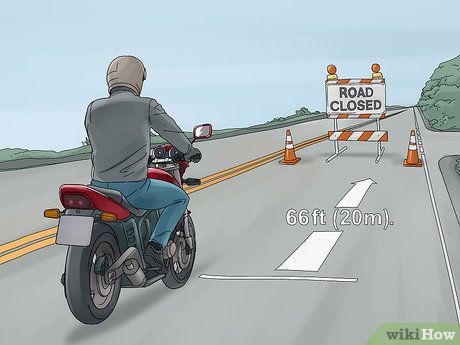
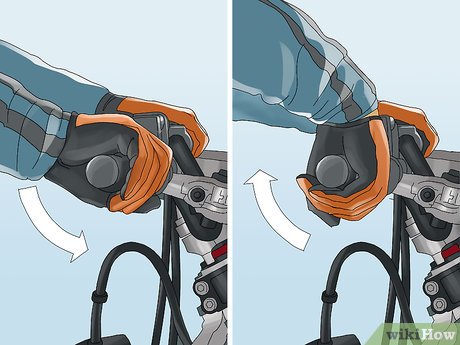
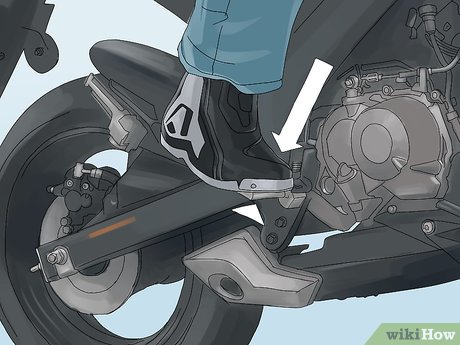
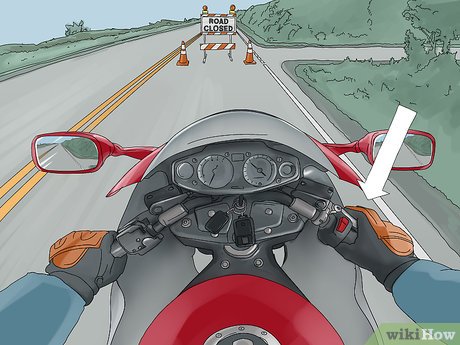
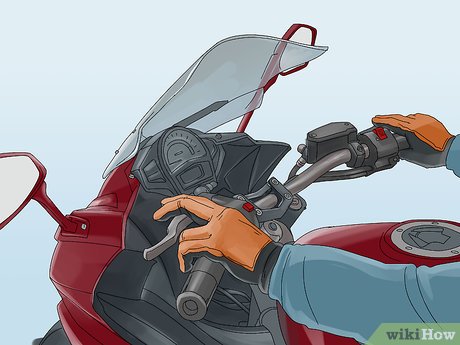
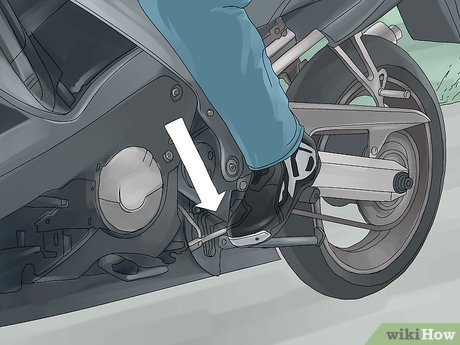
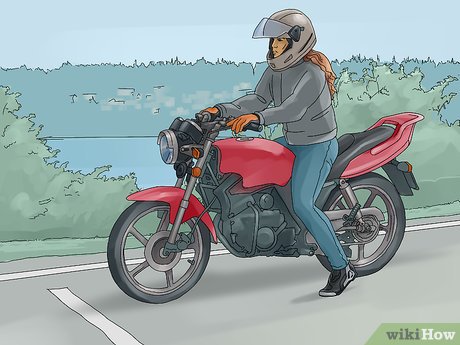
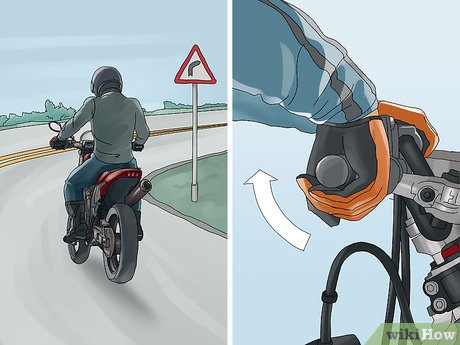

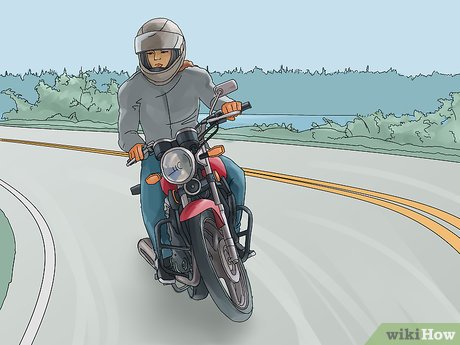
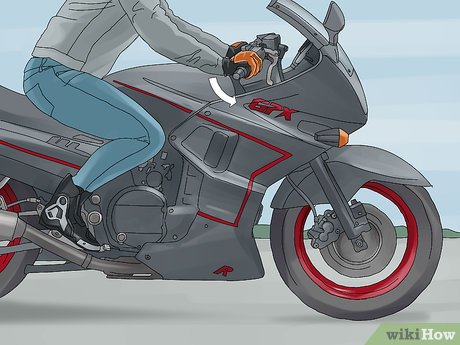
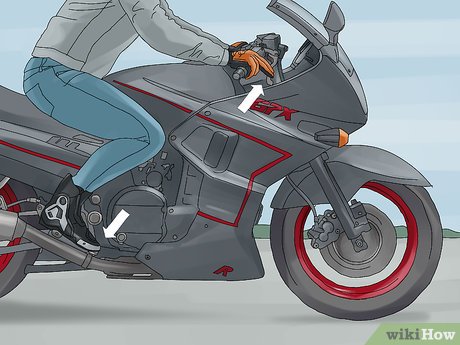
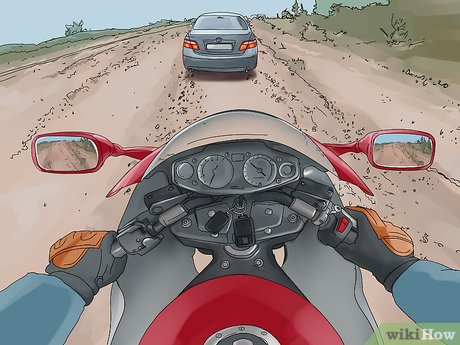
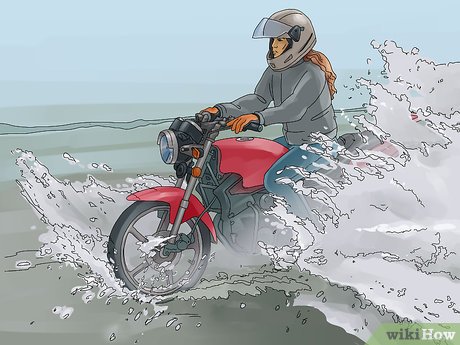
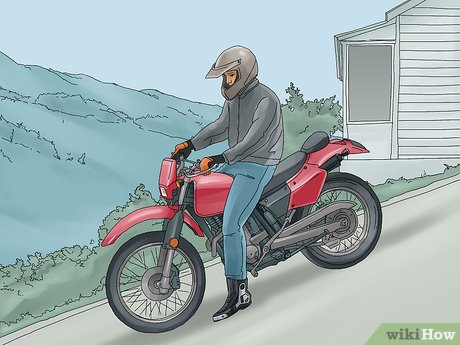










 How to Use a Torque Wrench
How to Use a Torque Wrench How to Build a Bicycle Cargo Trailer
How to Build a Bicycle Cargo Trailer How to Know Whether to Call the Police After a Car Accident
How to Know Whether to Call the Police After a Car Accident How to Hang a Bike on the Wall
How to Hang a Bike on the Wall How to Navigate a Roundabout
How to Navigate a Roundabout How to Replace a Hydraulic Hose
How to Replace a Hydraulic Hose